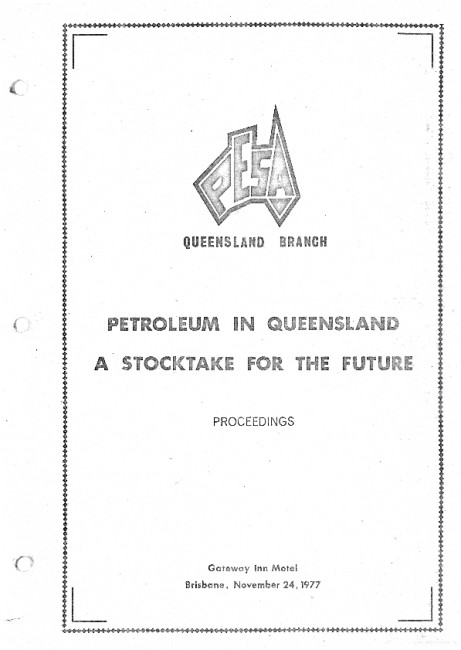Publication Name: Petroleum in Queensland - A Stocktake for the Future
Authors: P.J. Hawkins
Date Published: November 1977
Number of Pages: 51
Reference Type: Journal Article
Abstract:
Hydrocarbon prospects of the Galilee Basin, an extensive Late Carboniferous to Middle Triassic intracratonic basin, are reviewed with special reference to the northern area. Results of recent stratigraphic and facies investigations together with available reflectance, geochemical, and temperature data form the basis of this review. The Triassic sequence is not discussed as prospects are rated very low.Lack of major discoveries in the Galilee Basin to date are attributed, in part, to the drilling of structures which developed too late to trap hydrocarbons and in part, to generally poor source rocks. Present well and seismic coverage of the more prospective areas of the Koburra Trough and Lovelle Depression is inadequate. More emphasis should be placed on carrying out new seismic surveys rather than reprocessing existing data. Future exploration programmes should attempt to locate Early Permian structures in the Koburra Trough and Lovelle Depression; the use of multi-coverage seismic will be essential to delineate basement structures which controlled Early Permian sedimentation.
The Early Permian sequence and temperature radients recorded in the Lovelle Depression are comparable with those observed in the Cooper Basin; it is postulated that the two areas were connected during Permian times. The most favourable tar gets in the northern Galilee Basin are like ly to be founJ in the Aramac Coal Measures sequence (Early Permian), which is present in parts of the eastern Galilee Basin and is well developed in the Lavelle Depression. The sequence contains both suitable source and reservoir rocks; however maturation
is a problem as temperature gradients are low in the eastern region of the basin. Nevertheless in deeper parts of the basin organic maturity has been achieved. Generation of gas rather than oil was more likely in these areas because potential source rocks are low in sapropefic matter. Both stratigraphic and structural traps a r e present in the basin. The Lavelle Depression (north of 23?S) offers good prospects in the form of drape folds over faulted b asem ent blocks into which hydrocarbons could have migrated from the Aramac Coal Measures; in the form of stratigraphic and fault traps located along the western downthrown side of the Cork Fault; and in the form of stratigraphic traps represented by distributary channel sandstone enclosed by fine-grained, impermeable backswamp deposits. Similar trapping conditions a re envisaged for an area west of Aramac in the eastern Galilee Basin.
Finally, adequate evaluation of hydrocarbons in the basin can be achieved only through an increase in seismic and drilling activities.


